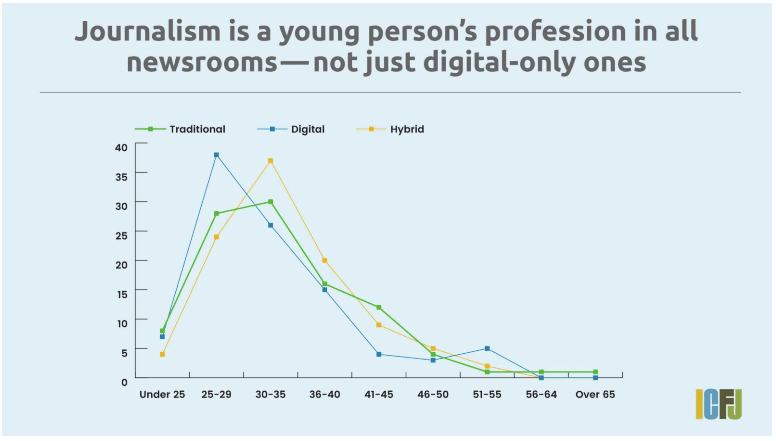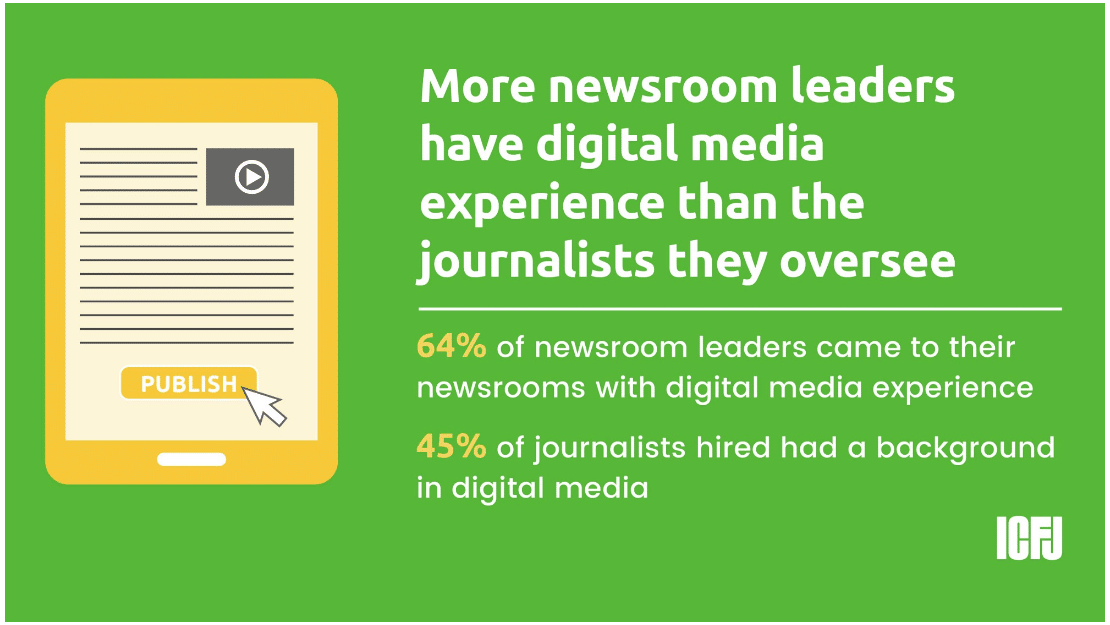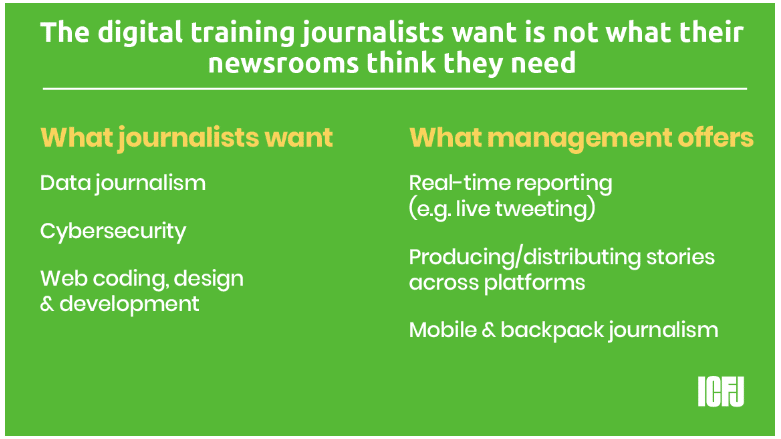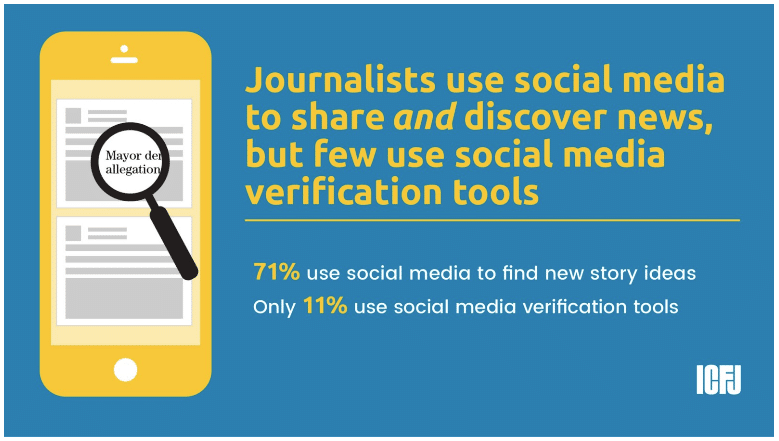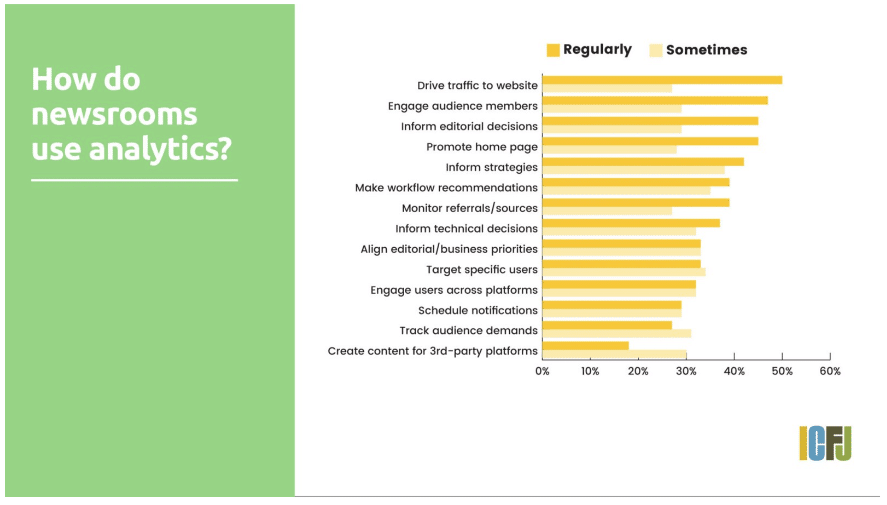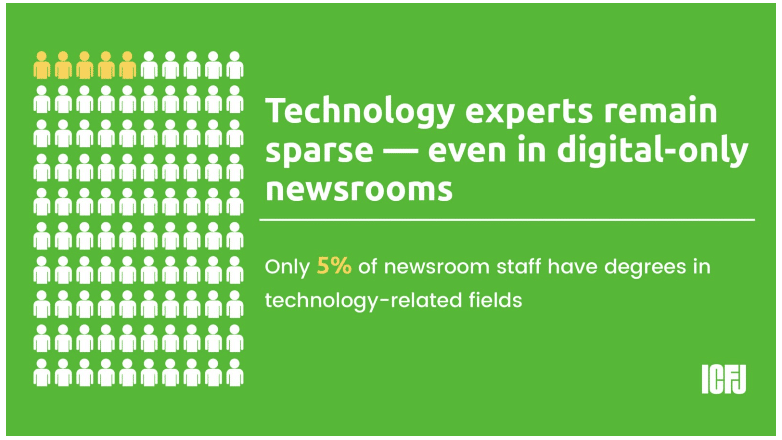In an era of fake news, digital security threats and competition for audience attention, journalists and newsrooms lack the technology skills to meet the challenges they face, new research from the International Center for Journalists (ICFJ) reveals. While the disruptions in today’s newsrooms have been widely examined, the study focused on a missing link—how journalists worldwide are using technology.
The results from the ICFJ’s State of Technology in Global Newsrooms study—based on responses from more than 2,700 newsroom managers and journalists from 130 countries, who provided responses in 12 languages—shows which regions are the leaders and laggards in digital technology adoption, among other findings.
“Despite the gains in embracing technology, journalists are simply not keeping pace with the transformations sweeping the industry,” said Joyce Barnathan, ICFJ’s president, in a news release. “This study pinpoints the gaps, helping us understand how to make headway now in everything from newsroom training to digital security.”
Several of the findings reveal that journalists lack digital skills essential to the mission of reaching the public with timely, accurate information without putting their sources or themselves at unnecessary risk.
Newsrooms rely on a limited set of digital skills
Of 23 digital skills identified in the survey questions, most newsrooms primarily use just a few. Meanwhile, less than a third of newsrooms use advanced digital skills, such as data journalism or building apps for news.
Surprisingly, less than half the world’s journalists and newsrooms secure their communications
And while most journalists use social media to find story ideas, only 11 percent use social media verification tools.
Most newsrooms use only basic analytics data to make editorial decisions
These decisions are made primarily to drive traffic to the news outlets’ own websites. This may put them at a competitive disadvantage, since social media firms, entertainment companies and other technology-driven companies deploy data science to analyze consumer behavior and optimize user engagement.
Only 5 percent of newsroom employees have degrees in technology fields
There is also a disconnect between the digital skills journalists want and what their newsrooms are teaching them.
Digital-only and hybrid newsrooms are outpacing traditional media in most regions of the world
The leader in digital-only newsrooms is Eurasia (the countries of the former U.S.S.R.) where 55 percent fall in this category. In contrast, South Asia is the only region where traditional media still reign. Traditional TV, radio and print media make up 43 percent of the region’s news outlets, compared with 22 percent that are digital-only and 35 percent that are hybrid.
Concerns about building trust with the public are not equally shared by journalists in different regions
Less than 30 percent of respondents in Eurasia and North America expressed concern about building trust, while in Europe, Latin America and the Middle East more than 50 percent surveyed said it was a major issue.
Download the full report here.
Storyful, Google News Lab and SurveyMonkey supported the study. Georgetown University’s Communication, Culture, and Technology program helped to administer and analyze the survey, which was distributed via SurveyMonkey. Results were collected across eight regions: Eurasia/former USSR, Europe, Latin America, Middle East/North Africa, North America, sub-Saharan Africa, South Asia, and East/Southeast Asia.


